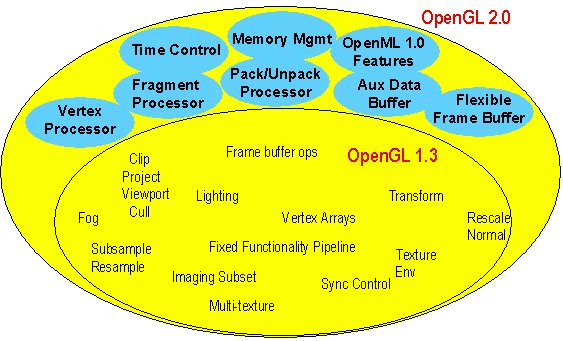OpenGL 2.0 - Out To Save Programmable Graphics
An Answer Appears To Be At Hand, And The News Is Encouraging
At the ARB meeting held in September 2001, 3DLabs presented its vision for OpenGL 2.0. In the past, SGI was the de facto leader of the ARB and a bellwether for the next generation of extensions. With SGI wisely spending its resources on reorganizing the company, 3DLabs has taken a more aggressive role in the committee, and had laid the groundwork for OpenGL 2.0 with an ongoing education effort leading up to the meeting in September. 3DLabs' Neil Trevett, senior vice president of business development, and John Schimpf, director of developer relations, prepared the group with a presentation at Siggraph, as well. By the time the ARB meeting rolled around, the 3DLabs contingent was met by an ARB which was much more willing and eager to get moving than anyone anticipated.
In fact, one of the first orders of business addressed by the ARB was the need to move beyond the ATI and Nvidia vertex shader extension debate. This was efficiently done as both companies huddled and worked out a strategy to develop an interim vertex shader. The process was both facilitated and devoutly wished for by Apple, which uses graphics technology from both Nvidia and ATI. Suddenly, the ARB looks like a forward-moving body with vision and goals.
The group accepted 3DLabs' offer to develop an architecture for OpenGL 2.0, and they've plotted a clear course. As is probably already obvious, the primary and most immediate goal for OpenGL is to enable and exploit hardware programmability. However, OpenGL needs to be updated in other ways, as well. OpenGL was developed in 1992, when hardware was slower and memory management was not a high priority. Now the group is charged with bringing memory management to OpenGL in order to support advanced pixel processing. Also, OpenGL needs to compete with, or complement, DirectX in the area of texture compression, which the ARB calls pixel packing. Then, there is the very real requirement for OpenGL to look forward to embedded graphics. And there, once again, the game is quite different, since embedded graphics are, by definition, fixed, and the applications that use them will have specific and less-sophisticated requirements, at least at first. In fact, one of the most pressing requirements for embedded graphics will be hardwiring Playstation 1 functions into a chip.
Finally, the Khronos Group, the developers and promoters of OpenML, hope to bring it into the OpenGL fold to enable the development of products that combine video functionality with advanced graphics capabilities. Also, the OpenML group, which includes 3DLabs, Sun, Intel, Discreet, Evans & Sutherland, Pinnacle, RealViz and SGI, has ambitions for embedded devices. They hope that, by creating standards for multimedia on Internet devices, they can move beyond porting games to PDAs and enable real graphics, video and interactivity.
Get Tom's Hardware's best news and in-depth reviews, straight to your inbox.
Current page: An Answer Appears To Be At Hand, And The News Is Encouraging
Prev Page OpenGL 2.0: Programmable, Scalable, And Extensible, Continued Next Page An Answer Appears To Be At Hand, And The News Is Encouraging, Continued